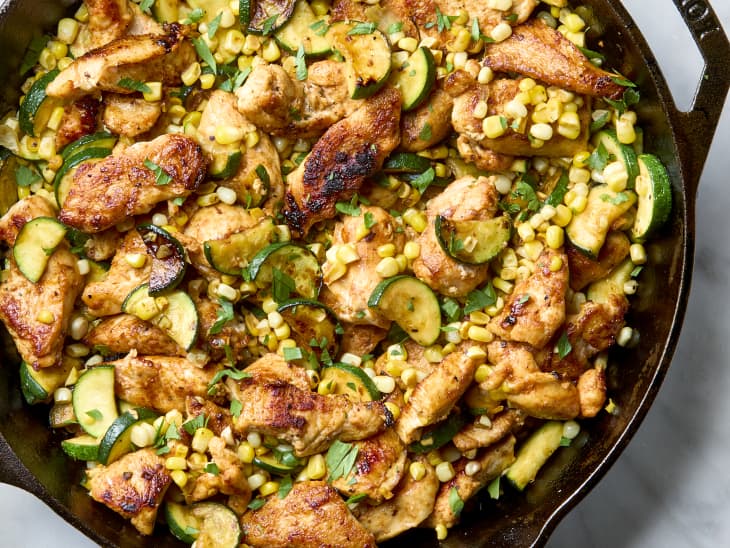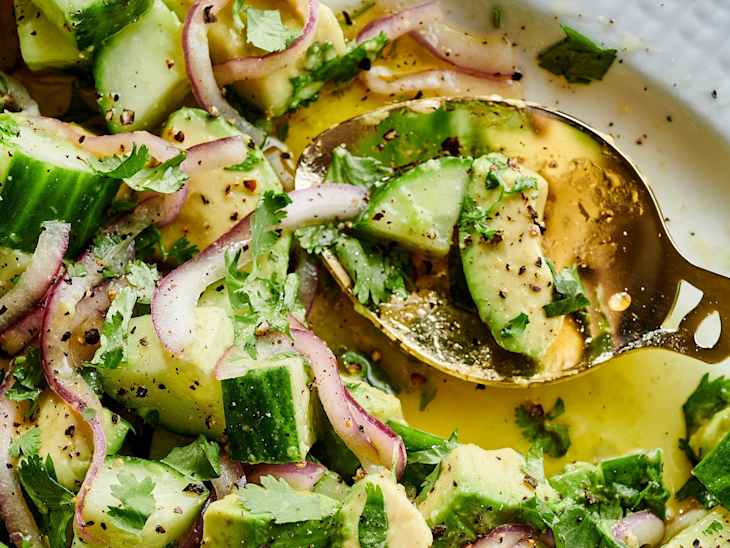

I learned a lot during my years-long career in professional kitchens. One of the best things about working in a kitchen among food professionals is getting to benefit from the wealth of knowledge being tossed around at all times. Sometimes it turned out to be the innocuous, super-small stuff that wound up changing me for the better as a cook. One such small thing that I picked up during a short stint helping out on the set of a cooking television show has made my life (especially on weeknights) so much easier: pre-chopping some herbs and aromatics.
What Makes Pre-Chopped Aromatics So Great
Chopping up some fresh herbs and aromatics — like garlic and scallions — might seem like too quick of a task to save you any meaningful time in the kitchen, but I am here to tell you it makes more of a difference than you think. More than the time saved, doing this little bit of pre-prep work has the potential to improve almost anything that comes out of your kitchen — even if it’s just leftovers.
I use my little bowl of pre-chopped herbs and aromatics constantly. It serves as the flavor base for everything from a pot of beans (getting tossed into a saucepan with a little olive oil before adding beans) to salad dressing (added to the bottom of a large bowl with olive oil and lemon juice for the quickest vinaigrette). If you opt to leave out the aromatics and just chop tender herbs like parsley, mint, or cilantro, then you’ll always have something colorful and full of flavor to top your dishes with; it adds a layer of fresh flavor to anything you’re about to eat. Trust me — this is one of those little “pay it forward to yourself” things that will take you five minutes to do, and is way more impactful than you’d think. Once you start, I bet you, like me, will find it tough to stop.

A Few Tips for Pre-Chopping Herbs and Aromatics
- Use tender herbs. While you can do this with woody herbs, like rosemary or thyme, I find that their flavor tends to overwhelm the mixture and they tend to brown a bit faster than tender herbs like parsley, mint, tarragon, or cilantro. I only include basil when I know I’m going to use the herbs in a day or two because it tends to brown faster than other tender herbs.
- Include stems if you want. Tender herb stems contain lots of flavor, so it’s up to you if you’d rather pick the leaves from the herbs before chopping them, or just include the stems.
- Store them under a damp paper towel. This is actually really important and will really extend the life of your flavorful mix. If you don’t protect them from drying out, the herbs won’t be much good to you in a day or two — and no one wants that. You can store the mixture in an airtight container in the fridge; just make sure everything is also covered by a layer of damp paper towel.
- Consider how you plan to use them. When thinking about what to pre-chop, think about how you plan to use these ingredients. I regularly use them as both a base in cooking and as a garnish. Depending on how garlicky I’m feeling sometimes I will opt to eliminate it, as there’s a chance I might be getting it raw. Other times I’m happy to have a bit of raw garlic bite. Garlic mellows out the longer it sits, so keep that in mind as well.